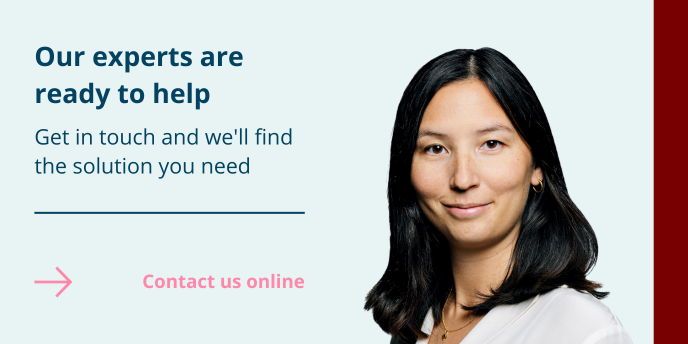With Elo Bromer, CIO at Danish Crown:
As CIO, Elo Bromer is responsible for realizing the full digital potential of Danish Crown in an industry that is still manual in many respects. He emphasizes the role of standardization as the foundation for digitalization and the importance of being concrete about how new technology affects the users' work processes.
The meat business is an industry with low margins and fierce competition. This means that Elo Bromer, CIO at Danish Crown, must bring efficiency, productivity, and economy front and center in everything he does. In the corporation’s results-oriented “doer”-culture, everything must be measurable and have a clear business purpose.
Standardization is the foundation of digitalization
Danish Crown has more than 25,000 employees distributed across eight separate business units in Denmark, Sweden, UK, and Poland. Elo Bromer estimates that Danish Crown is ahead of the digital curve compared to similar companies in part due to efforts to centralize IT in an organization where cultural differences can sometimes make implementing new technology a challenge.
"Historically, we have been a very decentralized organization. But in 2016, we began implementing a joint IT-platform and infrastructure. We're actively working to standardize KPI's and data sources across our business units, because that is the foundation of better automatization and scaling digital in the organization. We have a higher base cost level, so to stay competitive, we use a lot more automatization. In that respect, we are far ahead of our colleagues and competitors in the industry," says Elo Bromer.
Breaking the cultural barrier
Getting everyone more in sync is key for Elo Bromer and his IT team in their effort to operate effectively in an organization with varying levels of IT maturity and autonomy – parts of which have more or less been used to minding themselves for the past 10 years. Add a language barrier on top of that and you have a significant challenge.
"One of our business units used local vendors for IT purchases and had 350 different computer models at one point. Right now, we're looking to implement SAP in our Polish business unit with 1,500 users. When you only have 5 out of 30 IT staff members who speak sufficient English, things get complicated. We plan to hire local business-oriented project managers to get the project anchored all the way at the top of the organization and make sure everyone understands the risks and implications."
Agile keeps the users engaged
Elo Bromer and his team are currently experimenting with gradually introducing the organization to more agile methods. For example, a new demand planning system is being developed in several sprint iterations. Elo Bromer finds that agile is easier for the users to understand, but also requires them to commit a lot more resources to the task. In his experience, you should never underestimate the importance of making the users understand how the changes affect their future work processes. You therefore need to break everything down to make it more tangible and hands-on.
"One of the big benefits of agile is that the users are engaged all the way through. It also makes it easier for them to specify their exact needs. They may know that they want to move in a certain direction, but it is important to go through a maturity process where you gradually become more specific about what's going on and what the functionality will be. I think a lot of users appreciate that, because it is easier to understand than just talking about it," says Elo Bromer.
Digital allies
Often, Danish Crown gets digital assistance and inspiration from external partners. In some cases, it’s just a matter of extra hands, but in most cases, Elo Bromer and his colleagues are looking for key skills and insights.
"Whenever we approach a new technology or functionality, we ally ourselves with external partners to get the needed boost to succeed. Both in terms of knowledge, tools and understanding the topic. For instance, inter-bank activities and SAP Banking, where we're currently pulling in outside assistance. And if we want to work more with agility, we'll also enlist external partners to help us. Fortunately, there is a maturity in the market that makes it easy to hire external help with the right expertise."
Man and machine working side by side
Looking ahead, Elo Bromers sees a lot of potential in “Industry 4.0”-tech such as robotics and automatization, AI, and image recognition. For example, a combination of AI and image recognition could be used to evaluate the quality of the meat carvings and award bonus incentives to the operators, who are paid according to productivity.
"We're still a very manual industry. At one of our Danish sites, for instance, we have 1,700 employees processing 100,000 pigs per week. There's a significant potential - both to save costs, but also because it will be difficult to recruit enough labor in the future. So, we'll see a lot more, mostly in the form of hybrids, where man and machine work side by side. By nature, meat is a bit too difficult for a machine to manage on its own."

